Fitting a bespoke jacket – in de Le Cuona stone-washed linen
The first fitting is where the craft of bespoke tailoring most reveals itself.
Imagine lifting up the point of one shoulder. That shortens that side of the jacket, so it will have to be lengthened. It changes the angle relative to the other shoulder, so that has to be changed. It affects the entire, three-dimensional shape, and each panel has to be tweaked accordingly.
Of course, that presumes you know what has to be changed in the first place.
Readers often ask about the wrinkles you get below the back of an armhole. Some are needed to allow movement in the back, but if you wanted to reduce them, how would you do it?
You could raise up that side of the jacket. Or you could pull it horizontally, cleaning the excess into the side seam. It may even just be a case of lowering the armhole, because the customer’s arm is pushing down on it.
Any of those might be best, or indeed some combination. You start to see why it’s hard to suggest how to improve fit without seeing a jacket in person. No self-respecting tailor I know would do so.
And you can see why some MTM start-ups struggle to get a good fit. In my experience, they usually clear any excess into the armhole and side seam, just because it’s easiest. It avoids those 3D considerations mentioned above that come from lifting one side or the other.
The problem is, that often just makes the jacket tighter. If only customers understood that a tight jacket is rarely elegant.
All of this by way of contrast to the fitting shown here, on a new jacket at Anderson & Sheppard, being made for me by head cutter Danny Hall (above).
I’ve had several suits and jackets from A&S in the past, as we documented in the first article in this series here. But Danny has never cut for me, and drew his own, fresh pattern (as covered in the second article).
Yet almost no changes were required at this first fitting. A little bit of cleaning up in the chest and back - solved by a combination of all three changes mentioned above - and we decided to shorten to length.
But everything else was minor, such as shortening the sleeves. The collar was already sitting nicely on the back of the neck, and relatively high up as A&S usually does.
Bespoke regulars will note that this is not a standard first fitting. Usually, the first fitting is less finished - more of a ‘baste’ where the jacket is loosely sewn together using prominent white stitches.
Anderson & Sheppard traditionally goes straight to the second stage, often called a ‘forward’, and skips the first one.
However it’s important to note that this is only for easier body shapes, such as mine. If the customer were harder to fit - with a large belly, or a prominent stoop - Danny and the other cutters might start with a basted fitting instead.
This is not so that more adjustments can be made, just that they can be made more easily. Nearly anything can still be changed to my jacket after this forward fitting, including fundamental things like the length. It’s just quicker if no such changes are required.
I often get questions from readers about the number of fittings they should expect from a tailor.
This is driven by the fact that cheaper tailors and MTM houses often try to minimise their fittings to save costs. It can be seen as a way to judge whether something is ‘real bespoke’, or the quality of MTM.
Unfortunately, in my experience there’s no clear correlation between number of fittings and the end result, at least among good bespoke. Although most tailors use two or three, A&S has always been good for me - as has Ciardi - with really only one fitting. Others, such as Joe at Chittleborough & Morgan, stretch into four or five without a clear difference.
The important thing with bespoke is to give the tailor time and space to work the way they want to. Respect their craft and don't rush.
Among cheaper offerings, MTM will nearly always produce a finished suit at the first ‘fitting’, with no fundamental changes possible. That doesn’t vary too much. With cheaper bespoke, it’s best just to judge by the end result. Ideally on someone you know has already used them, before you commission something yourself.
In our previous piece in this series I also promised I’d talk about the cloth. It’s a heavy stone-washed linen, produced by the interiors company de Le Cuona.
When I covered Bernie de Le Cuona a few months ago, I wondered whether their linens and velvets - so different to what tailoring mills offer - would work for tailoring.
The silk velvet proved to be too lightweight, but this linen was beautiful. Called Artist Canvas, it is heavier (15oz) and denser than tailoring linens, but is washed with pumice stones to soften it and give it a soft, flowing drape.
It comes in a great range of colours, many also different from what mills normally offer. This one, called terracotta, is a soft orange/red.
I was a little nervous about using it with A&S, given it was an experiment, but it looks like it’s going to work out well.
Some fabrics used for interiors are treated, and many are too heavy or stiff to be used for tailoring - others too light or open. Caution is advised.
But with the right advice from the producer and an experienced tailor, it’s an interesting area to explore. Indeed, one fabric from Holland & Sherry that I’ve used before - ‘Pardessus’ - is now only available in their interiors collection. I had heavy (and quite soft) trousers made out of it; I know Andreas Weinas had a lovely coat in it.
Any cloths can be ordered from de Le Cuona by the metre, by emailing them. The Artist Canvas costs £170 a metre.
However, I might wait until my jacket is finished and I’ve worn it a bit before jumping in. Just to be on the safe side.
This article is the third going in depth on the bespoke tailoring process, in the same way Permanent Style used to do when it first started.
Those posts were a lot shorter, but still, we did once do 13 posts on my first pair of Cleverley shoes.
The previous two articles in this series are:
Articles looking at the making and the final jacket are forthcoming.
Photography here: Alex Natt @adnatt


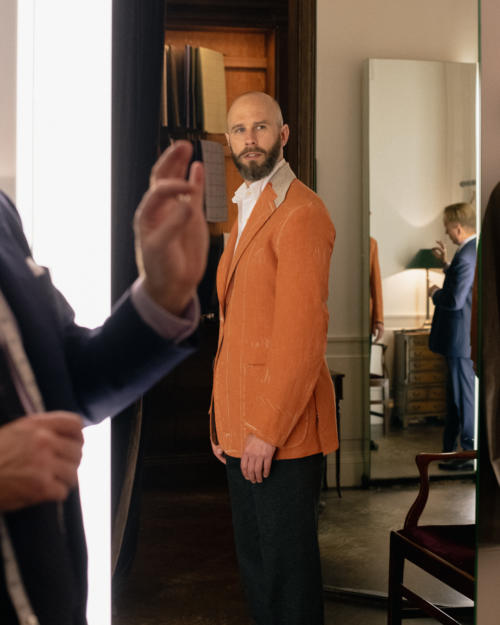
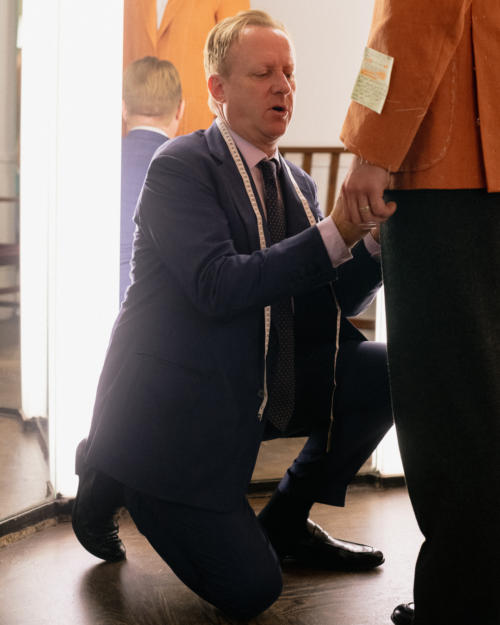
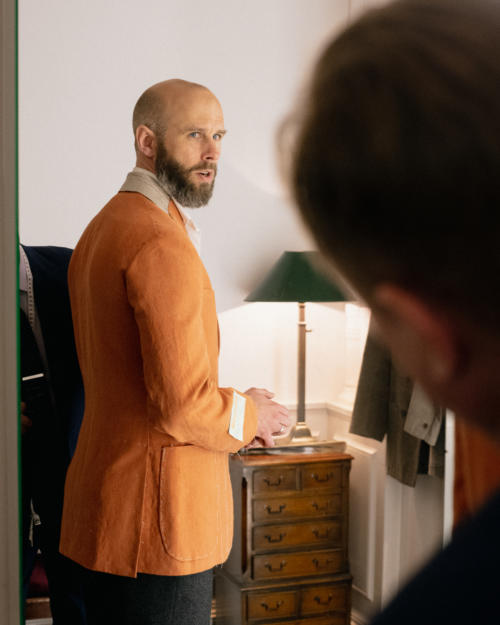
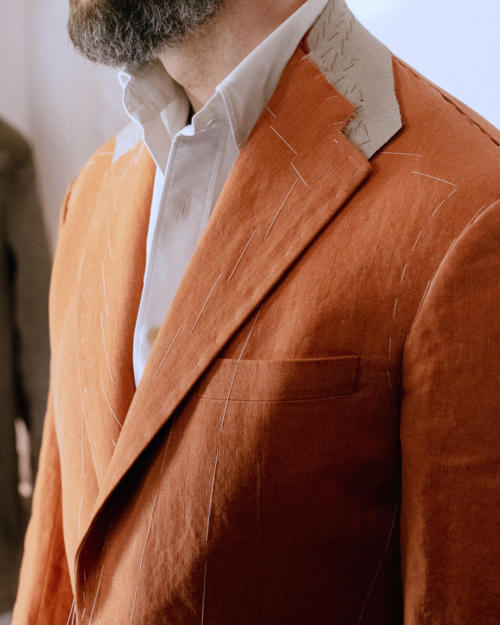
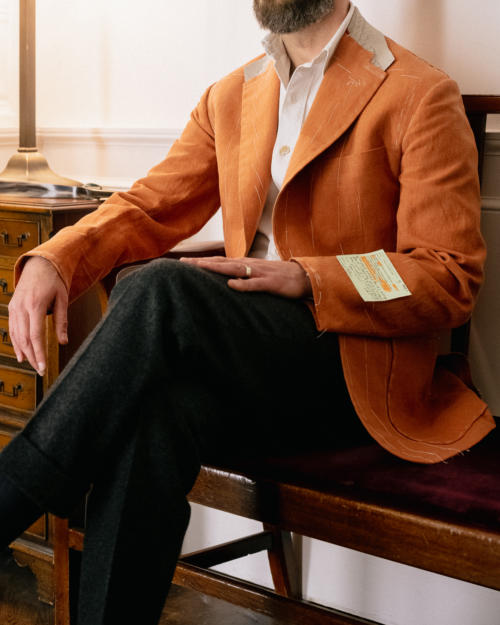
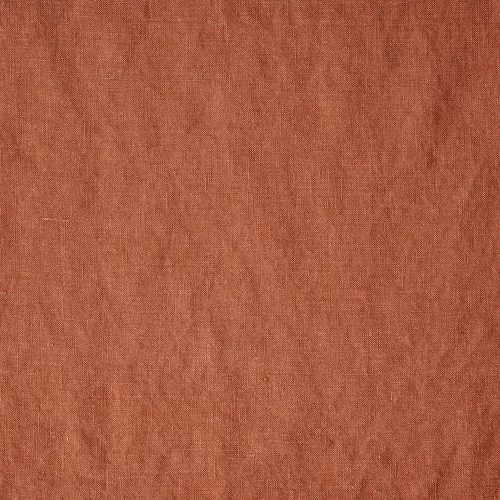
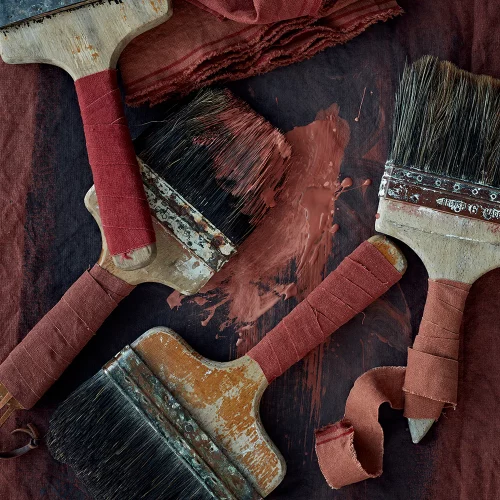
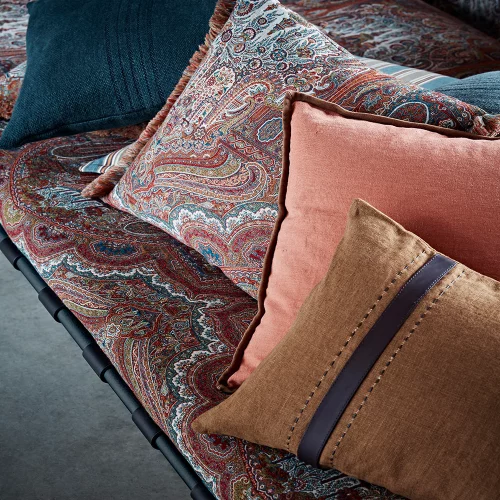
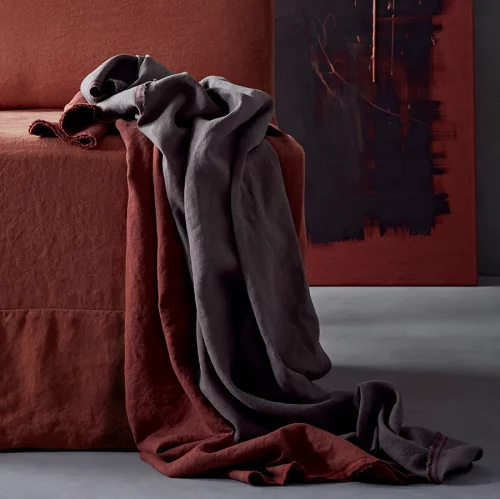
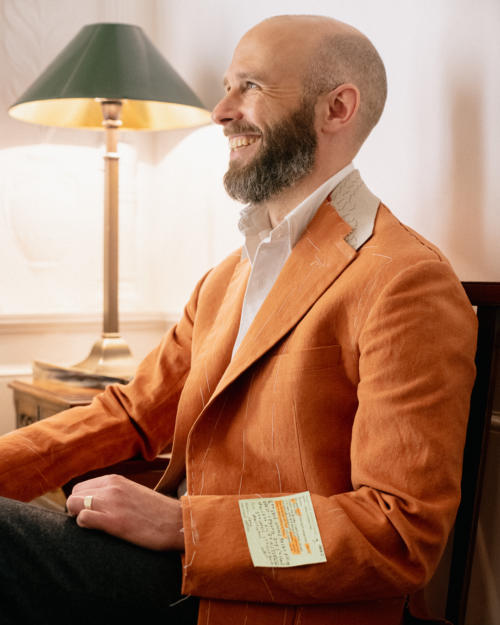


























Hi Simon
do you think being presented with a finished suit to take home on the first fitting in MTM is cause for concern?
got a mtm appointment with the anthology in Taiwan – would go bespoke but can’t due to time constraints – and they are very confident in their getting it right first time…. Should they be?!
As I said, most MTM basically produces a finished suit that is then altered from there, so I wouldn’t be worried about that. Some alterations are nearly always required – but I can’t really say how likely the Anthology are to nail it.
isn’t it correct to say, the less changes are required from brands rtw, the easier is bespoke/mtm?
Yes, that is certainly usually the case with MTM. Bespoke can be different, just because the process is often different – though I don’t think it is with the Anthology
As ever, thanks a lot.
The closer you are to the standard rtw style of the house the more likely you are to get a good result with mtm. It all depends on your personal morphology. Theoretically you might find that off the rack is perfect fit, better than any bespoke, but if you are the Hunchback of Notre Dame, that probably isn’t the case. For example I have slight deformity in my ribcage and as Simon wrote this requires a full 3D rework from standard pattern. It won’t be enough to just adjust a couple of panels. Obviously relaxed and fuller cuts are a lot more forgiving and you are more likely to get satisfying result with them.
Personally, m, I don’t think RTW can ever be better than good bespoke. Cheap bespoke, sure, but good bespoke would always be as good a fit, plus the 3D shaping and make.
Unless of course you’re including style in that equation as well
I think what M meant is that theoretically, if your mensurations are exactly those of the pattern used for the RTW garment, it should suit you perfectly.
OK, thanks. That’s obviously unlikely, given the fact no RTW pattern will have one shoulder lower than the other, any stoop variation and so on. But even if you happened to be the same, the jacket still wouldn’t look the same or perform the same because of the 3D shape created by the bespoke make?
Yes you are right Simon, I was using too strong of a language by saying “better than any bespoke”. What I meant was if you manage to find a well made rtw that fits you nearly ideally then that is perfectly acceptable alternative to going bespoke. With rtw what you see is what you get, with bespoke there’s a risk involved that end result will not be what you had hoped for. I think going bespoke you have to be ready to commit time and money but most importantly be ready to accept failure. I find there are quite a few people who make what is considerable investment for them expecting perfect result and then get burned and disillusioned. But as you said not all tailors are equal and standards on what is acceptable end result vary wildly. Thankfully in form of PS we have this great resource that you have created to guide us.
Thanks, yes I think that’s all good advice
M, absolutely on point regarding ‘ready to accept failure’, most people presume bespoke = perfection, which is so far away from the truth. I guess everyone have to learn that lesson for themselves. A&S in my opinion just not very good with lighter fabrics.
Nice coat in my favourite colour, Simon. However, two comments:
Thanks
1. That wasn’t the pitch, just needed cleaning up a bit
2. Yes it is different, but what I asked for rather than being a new standard. I prefer more curved ones personally
Interesting to read a bit more about the art of bespoke tailoring.
What intrigues me though, is the choice of fabric. When house hunting in New York twenty or so years ago, I viewed a property that had carpet on the walls. That struck me as odd.
Having a jacket made from curtain material sits, for me, in the same category.
Speaking of easy and hard-to-fit clients, it would be very interesting to see a comparison of how one bespoke house drapes its house style over multiple customers of different builds. That would really give a sense of the 3D complexity discussed here as well as highlight how different features of a suit can be adjusted to flatter different builds.
Good point Ben, yes
Lovely coulour, perfect for summer, although with such a heavy cloth and so densely woven, wouldn’t the jacket be quite hot ?
On another note, the sleeves look wider than what you would normally have; is that a style choice, or will they be tapered later on ?
I think it’ll be good for the vast majority of the time in England. I would think again if I lived in Italy or Hong Kong though
The sleeves are a standard width for A&S, though that’s wider than some English, and pretty much all Italians or French
I’ve seen a few jackets that my tailor Ferdinando Caraceni has made for clients in very heavy Belgian linens that I expect are quite similar to this one. I am not sure if those linens are originally intended for furniture, but they are much heavier than the heaviest Irish linens I’ve come across and fairly slubby.
I personally really like what I have seen of those jackets and the pictures of Simon’s jacket here: probably not the first summer jacket you’d order, but a really fun jacket if you have a large wardrobe and spend summers in places like N Europe or the mountains where it isn’t so warm.
Beautiful cloth – great for summer. The collar and back look very clean. And there are a few times I’ve seen interiors swatches and thought they’d make a great jacket.
However, I’m interested in the sleeves on this one – to my untrained eye they look wide, particularly around the elbow and forearm. Is this just the photos, or A&S style, personal preference, or something you are fixing at this fitting?
It’s A&S style to have them quite wide, and I like a wide sleeve, though may taper it a bit more toward the bottom
Do you find wider sleeves more comfortable? I think that I remember in one of your articles that you said wider sleeves are perhaps more masculine. The reason I mention this is because I have a thin frame and have always thought trim sleeves are more flattering.
Yes, I find them more comfortable and more masculine. All in proportion though of course – yours may be quite roomy compared to your frame
Such a timely article has I’ve just received my first bespoke suit.
Under the influence of PS I started with MTM shirts several years ago. Now having receiving my first bespoke commission it was a real mix of emotions .
There’s the initial excitement at having started the process, the anticipation and puzzling nature of the first fit and finally the ‘mixed emotion’ of receiving the finished product.
I say ‘mixed emotion’ as part of what follows , after you look at yourself in the mirror with said garment a thousand times, is a critique of everything you’d do different next time .
e.g.
a slightly lighter cloth,
jetted pockets instead of patch pockets ,
half an inch shorter on the jacket length ,
maybe try a tailor who does a more ‘stylish’ cut
maybe use a tailoring house where you deal with a salesmen rather then directly with a cutter (much like getting an architect to design your extension then a builder)
etc etc .
Everything I’ve read for years on PS is ringing true (or is that ringing through ).
For example , with my body shape do I really need bespoke ? Wouldn’t MTM do the trick ? Bespoke is how it’s made but ‘house’ style is how it looks .
Now I understand ….. it never ends with just one or two suits …. It’s a never-ending pursuit of perfection !
P.S. I noticed on my jacket a ‘flaring’ at the bottom to the sides as the jacket comes down from the waist .
Simon, is this due to my body shape or something that needs ‘fixing’?
It’s hard to say remotely, but the bottom of the jacket should flare out a little bit – it’s a flattering feature, leading the eye to the waist and making it appear smaller too
Looks very beautiful even at this early stage. The colour is fantastic. I’m wondering whether you have had to direct the cutter a lot in terms of your preferences with this new project, having noticed A&S moving away from the traditional drape cut more recently (perhaps an unfair comment based only on social media posts), or you have the cutter full discretion for this fitting at least
I gave full discretion, but also used my old blue A&S linen jacket for reference, to give a sense of the proportions I like – just to keep on the safe side.
I would hesitate to judge something like drape from online photos, yes.
Simon,
Interesting point about the variation in numbers of fittings between makers. I appreciate your comment about allowing makers to get on with it as per their philosophy. However, I can’t help thinking that in most endeavours, taking four to five steps to do something that could be accomplished in one would be regarded as rather wasteful and inefficient. Especially if there was no appreciable qualitative benefit.
I accept that this might be a rather utilitarian and mechanistic viewpoint, and that there are other factors that go into selecting a maker, but such a wide disparity of practice does seem odd.
Really love the A&S articles, by the way!
Best wishes.
Cheers.
Yes I can certainly see how that would feel instinctive, but with something that is less mechanical like this, and requires more abstract imagination of shapes, it’s hard to be prescriptive there. Also, tailors do make in slightly different ways, because they feel the result is better, but the tailors themselves would argue about that, so it’s something it’s hard to feel you could have a definite opinion on as a layperson, if that makes sense. Better to judge on the results, as I have generally over the years
Thank you for such an interesting post. Would you say that the cloth is more casual than most Irish linens intended for tailoring? I think it could work really well for more casual garments such as safari jacket or even overshirt or shirt style jacket (if it’s not too heavy for it). Would you agree?
Yes I do. I don’t think it makes much of a difference when cut and made like this, by an English tailor, but it could be particularly suited to more casual designs like that
In the past, you wrote you don’t like patch pockets from English tailors, yet you choose these with this jacket. Did your taste change or are these different? Thank you.
They are slightly different
Gorgeous colour. Two questions: what colour shirt and trouser would you imagine wearing with this, and what sort of price are we talking?
I haven’t tried it yet, but I’d imagine I’d start with something like a white shirt and mid-grey trouser, or cream trouser and pale blue/denim shirt, and see how that works. Maybe a white/blue stripe in the shirt so there’s some pattern
I think this jacket is going to fantastic on you. Over the years I’ve been following PS of all the English tailors that you’ve commissioned I’ve been most impressed with the look of Anderson & Sheppard and Steven Hitchcock.
Simon – sadly the links for that Cleverley series no longer seem to work…
Ah no, sorry. I’ll look at redoing those – in the meantime a search for Cleverley will pull them up
I am curious about how cutters are assigned to customers at A&S (and other, larger tailoring houses). I am getting my first suit made there and my cutters both seem on the young side. Is there a hierarchy for customers? It doesn’t stand to reason that new customers are assigned junior people since the result may not be sufficiently good to make them repeat customers.
Any large house would say that you will get the same quality of product no matter what the cutter, because the cutters don’t work in isolation – they all work together, supervise each other’s work, use similar coatmakers and so on. I can’t really comment on the extent to which that is true, but that’s certainly what they all aim for. The cutters are not seen as that separate.
The logic for assigning new customers to younger cutters is often that then the new customer can develop a relationship with that cutter.
that makes sense, and it’s something i did think about… being, dare i say it, a younger customer myself.
Hi Simon,
Yes, experimenting with unusual fabrics in tailoring is a good idea, But frankly, I find the color of the jacket too showy, even for women. If you had chosen a muted color instead, and thus focused solely on the make (A&S!) and the potentiality of the cloth beyond its normal use, you could have been more helpful in many respects.
John
Thanks John. Keep in mind that I’ve had many summer jackets over the years, so have quite a few that are more muted. Indeed all mine at the moment seem to be shades of beige, cream and brown! I’ve also covered the making process before on other jackets
Some of the passive-aggressive comments on this site are frankly ridiculous. What does it matter which colour fabric is being used? It’s a personal decision!
Thanks Rob. I didn’t think that one was aggressive in any way to be honest, even if I disagreed. I think it’s understandable as well that readers are interested in why I choose certain fabrics, or at least I’m happy to talk about it
One place I recommend for Velvet is Pontoglio velvets, Huntsman used them for Orange velvet jacket for Eggsy in the film Kingsman, and I’ve found their velvets to be of extremely high quality:
https://www.pontoglio.it/
Hope this comment is useful
GOOD MORNING!!! i love the color…when completed it will look fabulous on you…..enjoy your week..peace
Hey There Simon!
GREAT stuff; always and all ways happy to share your experiences. Here’s a query:
I was “adopted” by a Custom Tailor out here in Hollywood; Antonio Gasbarri made Bogie’s white dinner jacket in “Casablanca”, most of what Desi Arnaz wore, and cut for more folks, moguls to mafia, and actors galore. Told me he was getting older, and wanted to do me a good turn. Ended up making 5 pieces for me, (two of which were destroyed by moths; I see in an earlier blog you made the same mistake; #%&!!!) However, and here is the question: He made my clothes in a unique way, and I am wondering if you have ever seen this…NO BACK SEAM! A one-piece back; apparently and old Roman way of tailoring. It made the making very difficult, as one mistake and you’ve wasted the fabric. In point of fact, and to that end: He cut a hole in the lower part of the back of my first blue suit from him. I told him I’d take it to get it woven; his answer? “Weave it if you want, but I’m not putting my name on something with a hole in it.”!!!! How about that?! I had it woven, and he GAVE me the finished product. He was a father-figure, (in fact, he passed a month after my own father; so sad.) When I came home with my first suit my wife exclaimed, “Gasbarri found your ass!” HA! I asked him what I should say when folks asked why I was so well-dressed; he said, “It’s Hollywood! Why are YOU not dressed for it?” That worked wonders! At any rate, he taught me the lesson that, if you are well-dressed, folks will treat you differently and not even know why they are doing so. Thank you for your continued content; really is wonderful. Greetings from Hollywood!
Thanks David, and what a wonderful story.
Yes, one-piece backs are not uncommon in the UK either, but not popular among tailors as they are so much harder.
Hi Simon,
Firstly I want to say I find your articles extremely interesting and insightful so thank you for the content. I recently purchased a MTM suit with what was considered a ‘natural shoulder’ with fairly heavy sleeve roping however the overall look of the shoulder appears far more square compared to many of your jackets – even this A&S one which has padding in the shoulders. I don’t mind moderate padding but I also like the sloped aesthetic – is this created by the height at which the collar sits on the back of the neck, combined with say the amount of padding in the shoulder? Many of your jackets with the nice slope seem to also have a slightly raised shoulder with what looks like roping. One last question was how straightforward is it to remove shoulder padding from RTW jackets/coats and do you think it would ruin the clothing?
KR,
Chris
Hey Chris,
Yes it’s hard, some people will call a natural shoulder one with just a little less padding than their normal structure.
The sloped aesthetic is about the padding, and a little how high it sits on the neck, as well as drops a little off the end of the shoulder. If there’s no roping this helps too, but you can have that and still have a sloped look if the other things are in place, if that makes sense.
It’s definitely possible to remove padding from a jacket, but it’s not an easy job and it’s hard to know how it will turn out – I’d say only do it if you’re definitely not going to wear the jacket otherwise.
More here on what alterations are possible in a jacket by the way.
Hi Simon. When looking Artist Canvas colour range what’s your opinion on Sunset? Or any other colours which struck. I ask because terracotta is sold out. Regards Henry
Sunset looks pretty strong. I’d go for something more muted – Terracotta is the strongest I’d want. This summer I might try one of the creams or neutrals
Beautiful jacket a good example of what you can do if you’ve built the basics and you want something a bit more fun, reminds me a lot of the jacket worn by Toni Servillo in the great beauty.
After wearing it at Piti how do you feel the fabric has still held up.
Sorry for the late comment.
No worries John, nothing is ever too late. The fabric has held up well, but it’s never going to be something I wear intensely, so it’s not necessarily a fair test. It has given me enough confidence to commission something new in a dLC fabric for this summer though